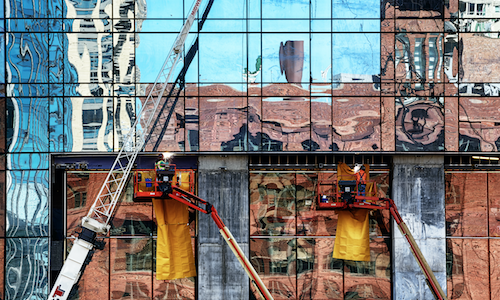
Every year, the Urban Land Institute, in collaboration with PwC, takes on the notoriously herculean task of understanding where the nation’s real estate market – and the patchwork of markets that make it up – is heading. The two groups interviewed more than 500 developers, lenders, builders, and other insiders, to put together this year’s Emerging Trends in Real Estate 2017.
Here were its biggest findings:
1. This Cycle is Unique, and Not Over – Since World War II, real estate cycles in the U.S. have averaged 58 months. As of Aug. 2016, our current cycle has lasted 85. Some worry that because sales volume has improved so drastically since the 2007-2008 crash that the cycle is nearing its end, but as the report points out, “Little in the U.S. macroeconomic data suggest overheating, the primary symptom of trouble ahead for the cycle.”
One of the historic drivers of overheating is over production. However, as a reaction to the downturn, credit availability was tightened, and in many respects remains tight, which has kept builders from borrowing the capital they need to take on large numbers of projects. The result has been less building and a prolonged market cycle. The experts cited in the report claim that when the cycle does come to a close, those factors will help it from ending in another recession.
Learn the 5 ways new construction will change
2. Optionality – There are several real estate markets around the country that investors describe as “volatile,” which has forced many to look at ways to ensure (and further maximize) returns. “Optionality,” ULI and PwC expect, will be a key component of those strategies.
In essence, optionality means finding multiple values in a single investment. One way developers are already doing that is by allowing multifamily tenants to use their units as either a living space, a work space, or both. As one REIT head explained to researchers: “Jobs are no longer careers, and Millennials are not yet looking for the commitment of owning a home. They are footloose in the job market, and footloose as to roots in the community.”
3. Small Developers Have a Big Role to Play – Because of the credit availability situation described earlier, small builders have struggled and many have been forced to close their doors. Still, they remain significant. According to the report, these small builders differ from big developers in that they’re in a better position to address such things as: affordability across property types; infill in older neighborhoods; and smaller markets that are less interesting to big brands.
4. Real Estate Employment Redefined – As we have covered in great detail, the real estate industry, and particularly the construction sector, is facing a serious labor shortage that is only expected to worsen. And it’s not that labor pools are drained – additionally, the allure of construction and real estate for skilled workers is simply not there. ULI and PwC expects that in 2017, the industry will work to reshape the way college graduates view the construction industry – not as a “dead-end job,” but rather, a “step on a career path.”
Consumers say the market’s in crisis, Realtors stay positive. Find out who is right
5. Local Governments Answer Affordability Call – This election cycle has been something of a nightmare, and it’s done nothing to instill any sort of confidence that on Nov. 9, the federal government will have the wherewithal to accomplish anything, let alone solve the nation’s home affordability crisis. Instead, the burden will fall on local governments.
In some cases, like in Chicago and Atlanta, local governments have already taken steps to address affordability, namely in the way of inclusionary zoning, a process in which “cities require or encourage developers to create below-market-rate rental apartments or for-sale homes in connection with the local approval of a proposed market-rate development project,” as the report describes it. Next year should see that trend continue.
6. The Internet of Things – Ten billion devices were connected to the Internet last year, and by 2020, that number is expected to be somewhere around 34 billion. The increase will not be a simple matter of more people having more phones, computers and tablets; it’s also accounting for connected street lights, HVAC systems and parking meters. Everyday objects will be constantly observing and communicating, optimizing services in real time to make cities more efficient. The phenomenon has been nicknamed the “Internet of things,” and it will change the way cities develop.
